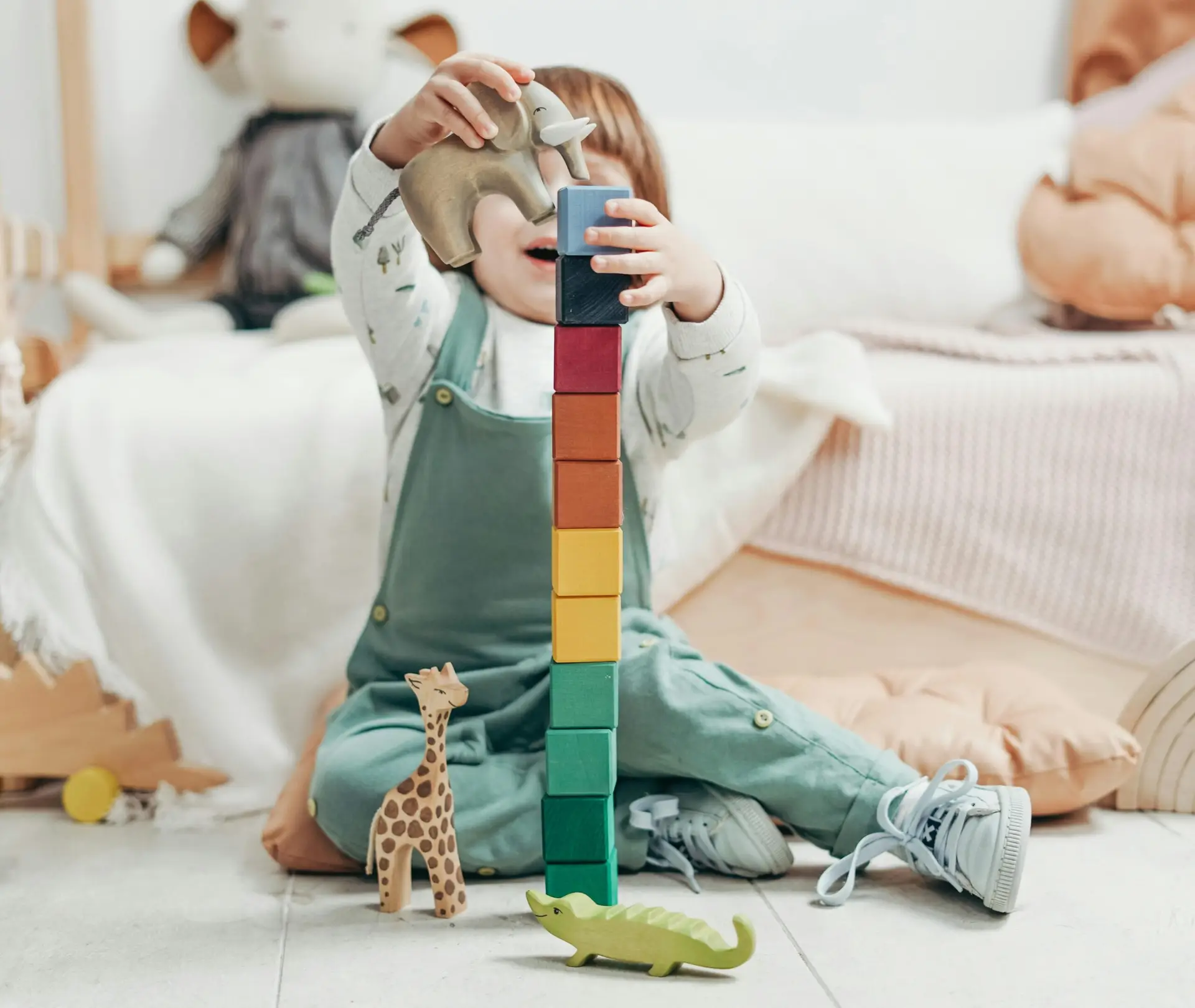
The Benefits of Child-Led Play for Kids and Caregivers
As parents and caregivers, we sometimes feel the pressure to provide a steady stream of entertainment for the kids in our care. While structured activities are a wonderful part of any day, there’s another kind of activity you can curate that allows you to step back and be more hands-off: child-led play. Not only can it offer a moment for adults to recharge, but it also has tons of benefits for kids.
What is child-led play?
Child-led play is exactly what it sounds like: play that is initiated and directed by the child. It allows kids to follow their natural interests, formulate ideas, and have self-directed experiences through play.
What do kids gain through child-led play?
Self-Discovery
When kids have the space to explore different ways to play, they begin to uncover their natural interests. These self-directed experiences can also help them learn their own strengths and limitations.
Self-Confidence
Making decisions about how to play provides low-risk opportunities to build independence. As kids practice making their own choices, the more confident they become.
Emotional Development
Play of all kinds helps kids learn to manage their emotions. They can experience a full range of feelings – excitement, frustration, joy, disappointment – as part of the process of play. Learning how to work through these moments helps create a foundation for emotional intelligence.
Creative Problem-Solving
Child-led play encourages problem-solving and critical thinking. Whether it’s figuring out how to arrange the perfect block tower or creating new rules for a game, children can experiment with different strategies to solve problems and think outside the box.
Communication
When children lead their own play as a pair or group, they learn how to express their ideas and desires. Negotiating, cooperating, and resolving conflicts can all be parts of working out what and how to play.
How can I promote child-led play?
Prepare the environment
Stock their play area with open-ended toys and materials. Simple items like blocks, art supplies, dress-up clothes, or even household objects can spark creativity.
Notice natural interests
When you notice your child taking a special interest in something, consider ways to incorporate elements of that into their play area. If they’re becoming more interested in drawing, you could add a new medium for creating, like oil-based crayons.
Narrate to build awareness
If your child wants you nearby, you can encourage their independence by narrating their activities back to them. This way, they can feel your presence while still maintaining the direction of their play.
Participate when invited
Child-led play doesn’t mean you need to stay completely hands-off. If your child invites you into their world of play, feel free to join in. Following along in their play not only fosters a sense of connection, but also allows you to experience a bit of childlike wonder yourself.
Child-led play is more than just fun – it’s a powerful tool for learning and development. By giving children the space to explore their interests and ideas, you’re helping them develop a foundation for lifelong skills. It takes time for kids to build the capacity for independent play, so start small and have patience. The rewards for both you and your child will compound over time.
